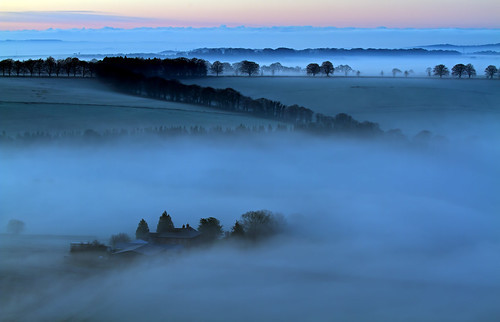#east meon
Text
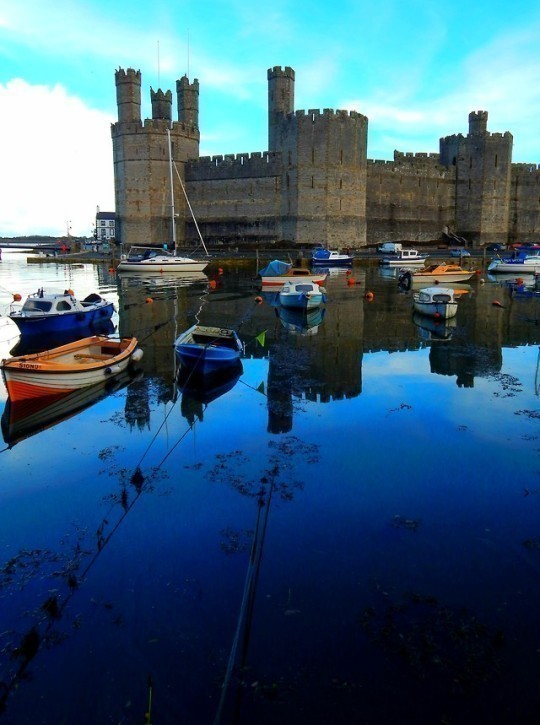
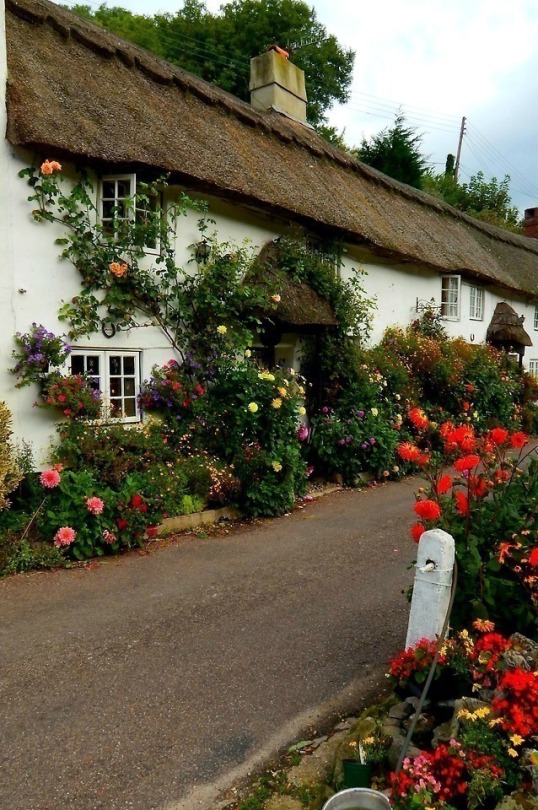



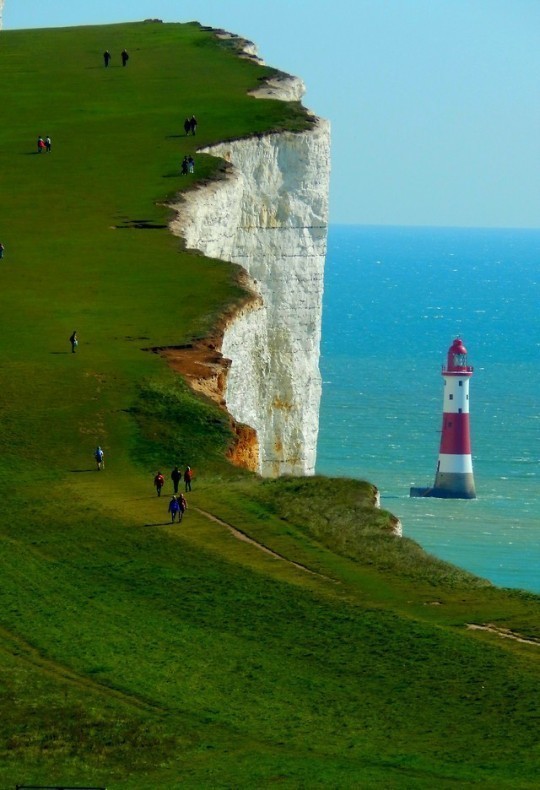

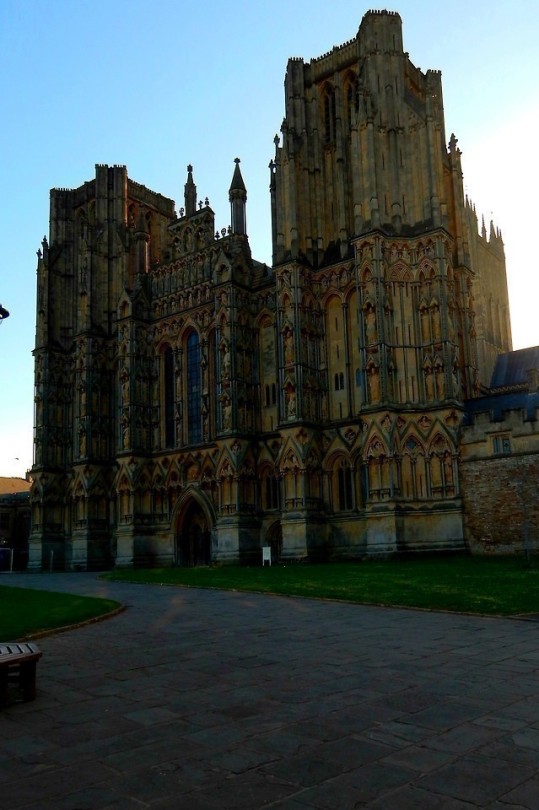

Great Britain: Caernarfon, Branscombe, Kynance Cove, Bath, East Meon, Beachy Head, Polperro, Wells, Chipping Campden
#great britain#england#wales#architecture#landscapes#caernarfon#branscombe#kynance cove#bath#east meon#beachy head#polperro#wells#chipping campden#uk#uk travel#travel#travel photography#europe#street#street photography#uk towns#uk village#uk cities#uk places#uk villages#rural#rural life#rural living#countryside
113 notes
·
View notes
Text
Twenty20 Surveys Ltd
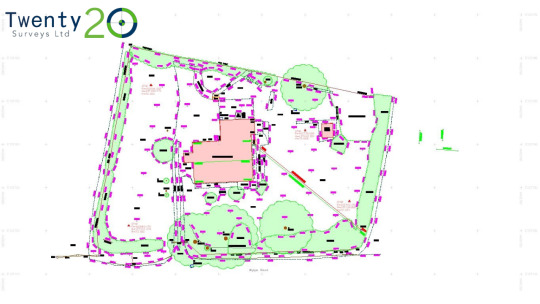
We're Twenty20 Surveys Ltd - Geospatial Surveying Specialists
Visit Our Website
#Topographical Survey Weston Colley#Topographical Survey Upper Clatford#Topographical Survey Stuckton#Topographical Survey Somerstown#Topographical Survey Old Alresford#Topographical Survey Froxfield#Topographical Survey Colden Common#Topographical Survey Swanmore#Topographical Survey South Warnborough#Topographical Survey East Meon
0 notes
Text

A Proclamation Against Ammon
1 Then the word of Jehovah came to me, saying,
2 Son of man, set your face against the children of Ammon and prophesy concerning them.
3 And you shall say to the children of Ammon, Hear the word of the Lord Jehovah: Thus says the Lord Jehovah, Because you said, Aha! against My sanctuary when it was desecrated, and against the land of Israel when it was desolated, and against the house of Judah when it went off into exile;
4 Therefore I am about to deliver you up to the children of the east to be dispossessed, and they will set up their encampments among you and put their dwellings among you. It is they who will eat your fruit and drink your milk.
5 And I will make Rabbah pasture land for camels and the cities of the children of Ammon folds for flocks, and you will know that I am Jehovah
6 For thus says the Lord Jehovah, Because you have clapped your hands and stamped your feet and rejoiced with all the malice within you against the land of Israel,
A Proclamation against Moab
7 Therefore now I have stretched out My hand against you, and I will deliver you as booty to the nations and cut you off from the peoples and destroy you from the lands; I will destroy you that you may know that I am Jehovah.
8 Thus says the Lord Jehovah, Because Moab has said, Look, the house of Judah is just like all the other nations!
9 Therefore I am about to open up the flank of Moab, taking cities from the cities on its frontier, the pride of the land, Beth-jeshimoth, Baal-meon, even to Kiriathaim.
10 I will also deliver it along with the children of Ammon to the children of the east to be dispossessed, so that the children of Ammon might not be remembered among the nations.
11 So I will execute judgments against Moab that they may know that I am Jehovah.
A Proclamation against Edom
12 Thus says the Lord Jehovah, Because Edom has acted full of vengeance against the house of Judah and has incurred serious guilt by taking vengeance on them,
13 Therefore thus says the Lord Jehovah, I will also stretch out My hand against Edom and cut off from them man and beast and make it a desolation. From Teman even to Dedan they will fall by the sword.
14 And I will inflict My vengeance upon Edom by the hand of My people Israel, and they shall act in Edom according to My anger and My wrath. Then they will know My vengeance, declares the Lord Jehovah.
A Proclamation against Philistia
15 Thus says the Lord Jehovah, Because the Philistines have acted in vengeance and have been full of vengeance acting with malice within them to destroy with a perpetual enmity,
16 Therefore thus says the Lord Jehovah, I am about to stretch out My hand against the Philistines and cut off the Cherethites and destroy the remnant of the seashore.
17 And I will execute a great vengeance upon them with chastisements of wrath that they may know that I am Jehovah, when I have inflicted My vengeance on them.
— Ezekiel 25 | Recovery Version (REC)
The Recovery Version of the Holy Bible © 2016 Living Stream Ministry. All rights reserved.
Cross References: Genesis 36:34; Exodus 7:17; Numbers 32:3; Numbers 32:37; Deuteronomy 3:11; Deuteronomy 28:33; Deuteronomy 28:51; 1 Samuel 30:14; 2 Samuel 12:26; 2 Chronicles 28:17; Job 27:23; Psalm 9:16; Psalm 70:2-3; Psalm 137:7; Psalm 138:7; Isaiah 11:14; Isaiah 14:29; Isaiah 15:1; Isaiah 25:10; Isaiah 33:4; Isaiah 35:11; Jeremiah 25:20; Jeremiah 49:1; Lamentations 1:14; Lamentations 2:15; Ezekiel 21:2; Ezekiel 21:32; Ezekiel 21:28; Ezekiel 24:27; Ezekiel 28:26; Ezekiel 30:19; Joel 3:4; Zephaniah 2:9
#a prophecy against Ammon#a prophecy against Moab#a prophecy against Edom#a prophecy against Philistia#Ezekiel 25#Book of Ezekiel#Old Testament#REC#Recovery Version Bible#Living Stream Ministry
3 notes
·
View notes
Text
Joshua 13: God Informs Joshua Their Is More Land To Be Conquered And Taken
1 When Joshua had grown old, the Lord said to him, “You are now very old, and there are still very large areas of land to be taken over.
2 “This is the land that remains: all the regions of the Philistines and Geshurites,
3 from the Shihor River on the east of Egypt to the territory of Ekron on the north, all of it counted as Canaanite though held by the five Philistine rulers in Gaza, Ashdod, Ashkelon, Gath and Ekron; the territory of the Avvites
4 on the south; all the land of the Canaanites, from Arah of the Sidonians as far as Aphek and the border of the Amorites;
5 the area of Byblos; and all Lebanon to the east, from Baal Gad below Mount Hermon to Lebo Hamath.
6 “As for all the inhabitants of the mountain regions from Lebanon to Misrephoth Maim, that is, all the Sidonians, I myself will drive them out before the Israelites. Be sure to allocate this land to Israel for an inheritance, as I have instructed you,
7 and divide it as an inheritance among the nine tribes and half of the tribe of Manasseh.”
Division of the Land East of the Jordan
8 The other half of Manasseh, the Reubenites and the Gadites had received the inheritance that Moses had given them east of the Jordan, as he, the servant of the Lord, had assigned it to them.
9 It extended from Aroer on the rim of the Arnon Gorge, and from the town in the middle of the gorge, and included the whole plateau of Medeba as far as Dibon,
10 and all the towns of Sihon king of the Amorites, who ruled in Heshbon, out to the border of the Ammonites.
11 It also included Gilead, the territory of the people of Geshur and Maakah, all of Mount Hermon and all Bashan as far as Salekah—
12 that is, the whole kingdom of Og in Bashan, who had reigned in Ashtaroth and Edrei. (He was the last of the Rephaites.) Moses had defeated them and taken over their land.
13 But the Israelites did not drive out the people of Geshur and Maakah, so they continue to live among the Israelites to this day.
14 But to the tribe of Levi he gave no inheritance, since the food offerings presented to the Lord, the God of Israel, are their inheritance, as he promised them.
15 This is what Moses had given to the tribe of Reuben, according to its clans:
16 The territory from Aroer on the rim of the Arnon Gorge, and from the town in the middle of the gorge, and the whole plateau past Medeba
17 to Heshbon and all its towns on the plateau, including Dibon, Bamoth Baal, Beth Baal Meon,
18 Jahaz, Kedemoth, Mephaath, 19 Kiriathaim, Sibmah, Zereth Shahar on the hill in the valley,
20 Beth Peor, the slopes of Pisgah, and Beth Jeshimoth—
21 all the towns on the plateau and the entire realm of Sihon king of the Amorites, who ruled at Heshbon. Moses had defeated him and the Midianite chiefs, Evi, Rekem, Zur, Hur and Reba—princes allied with Sihon—who lived in that country.
22 In addition to those slain in battle, the Israelites had put to the sword Balaam son of Beor, who practiced divination.
23 The boundary of the Reubenites was the bank of the Jordan. These towns and their villages were the inheritance of the Reubenites, according to their clans.
24 This is what Moses had given to the tribe of Gad, according to its clans:
25 The territory of Jazer, all the towns of Gilead and half the Ammonite country as far as Aroer, near Rabbah;
26 and from Heshbon to Ramath Mizpah and Betonim, and from Mahanaim to the territory of Debir;
27 and in the valley, Beth Haram, Beth Nimrah, Sukkoth and Zaphon with the rest of the realm of Sihon king of Heshbon (the east side of the Jordan, the territory up to the end of the Sea of Galilee).
28 These towns and their villages were the inheritance of the Gadites, according to their clans.
29 This is what Moses had given to the half-tribe of Manasseh, that is, to half the family of the descendants of Manasseh, according to its clans:
30 The territory extending from Mahanaim and including all of Bashan, the entire realm of Og king of Bashan—all the settlements of Jair in Bashan, sixty towns,
31 half of Gilead, and Ashtaroth and Edrei (the royal cities of Og in Bashan). This was for the descendants of Makir son of Manasseh—for half of the sons of Makir, according to their clans.
32 This is the inheritance Moses had given when he was in the plains of Moab across the Jordan east of Jericho.
33 But to the tribe of Levi, Moses had given no inheritance; the Lord, the God of Israel, is their inheritance, as he promised them.
#Lord God Jehovah#Holy Bible#Joshua ch.13#Joshua#Eleazar#Israelites#Land#Possessions#Taken#Conquered#Allocate#Nine Tribes#Inheritance#Servant Of God#Territory#Moses#Only Him
0 notes
Text
1 Chronicles 5 1-10. "The Pet Goat."

Reuben, the Pet Goat.
5 The sons of Reuben the firstborn of Israel (he was the firstborn, but when he defiled his father’s marriage bed, his rights as firstborn were given to the sons of Joseph son of Israel; so he could not be listed in the genealogical record in accordance with his birthright, 2 and though Judah was the strongest of his brothers and a ruler came from him, the rights of the firstborn belonged to Joseph)— 3 the sons of Reuben the firstborn of Israel:
Reuben's mistake "Laying in his father's bed" is blasphemy against the God of Israel the same way Esau sinned by selling his birthright to his brother. Both men, who were eldest, did not sleep in their own beds and dream their own dreams, and therefore the cup of salvation passed them by. This is why we call Reuben the Pet Goat, he did not become a man, only a housebroken farm animal.
Let us now see what the Torah means by continually awarding the rights of future to the next generation, even if those rights are taken through guile:
Hanok, Pallu, Hezron and Karmi.
Hanok=The Inauguration
Pallu=of the distinguished
Hezron=in the village
Karmi=the vineyard
4 The descendants of Joel: The Lord is God
Shemaiah his son, Gog his son,
Shemaiah = Yah has heared
Gog=Place of the roof
Shimei his son, 5 Micah his son,
Shimei =renown
Michah=Who is afraid? [who knows God?]
Reaiah his son, Baal his son,
Reaiah= Vision of Yah
Baal=The verb בעל (ba'al) means to exercise dominion over; to own, control or be lord over.
6 and Beerah his son, whom Tiglath-Pileser[a] king of Assyria took into exile. Beerah was a leader of the Reubenites.
Beerah=A well
Tiglath-Pileser=
My Trust Is In The Son Of Ashur, "Level in Step" Those Who Went Into Exile Now Realize That They Will Be In Eternal Bondage
Assyria=The levelers
7 Their relatives by clans, listed according to their genealogical records:
Jeiel the chief, Zechariah, 8 and Bela son of Azaz, the son of Shema, the son of Joel.
Jeiel=El Lives
Zechariah=pondering of Yah
Bela=swallow, as snakes swallow their prey
Azaz=to be strong
Shema=Sound; Report, Rumor, Hearing, Fame
Joel=foolish, willign, determined
They settled in the area from Aroer to Nebo and Baal Meon. 9 To the east they occupied the land up to the edge of the desert that extends to the Euphrates River, because their livestock had increased in Gilead.
Aroer=to accumulate
Nebo=the Spokesman
Baal Meon=Lord of the Hideout
Euphrates= good or noble
Gilead=the perpetual fountain
A desert that runs up to the edge of nobility that accumulates the words of the Spokesman and leads to the Fountainhead is a man who undertakes the First Noble Skill, Reuben and leaps out of his father's bed into his own.
The Lord of the Hideout just won't do, we need him to be out in the open waging war against the unspent delusions of youth:
10 During Saul’s reign "the petition" they waged war against the Hagrites- Servants of Egypt, who were defeated at their hands; they occupied the dwellings of the Hagrites throughout the entire region east of Gilead the Perpetual Fountain.
The Gematria of the Hagrites the "servants of the gods of Egypt" (liars and propagandists) vs. the Sons of Reuben is:
Hagrites:
"Stop the Fallen One. Decode God. Flesh and blood, the Easter Egg is peaceful. Like the back of a dollar bill. The God of Peace changed everything. The people on Capitol Hill are making decisions in blindness."
For Reuben it is:
"The order: Bulls code to find God and once in a lifetime are on the bottom. Through gang-stalking [of the men on top], they blossom."
This is what is meant by the accumulation of words being equiavalent of the accumulation of livestock to graze on the Noble Skills of the 12 and the 70.
Which is not that different from the Torah Tantra for the Sons of Reuben:
"God lives in the village where distinguished persons of renown are inaugurated. Who is afraid of the person who knows and listens to God?
To petition and listen to God like a snake swallows its prey and to be willing to speak [like the Mouth of the Fountain] is the beginning of noblemanhood."
So Reuben, "leadership" means at first one must be more of a follower, one who holds dear in his heart the belief that the government is the perfect way to make life on earth tenable.
Persons who follow this ideal never fall prey to the habits of false gods inside or outside of the State House.
0 notes
Text
Judgement on Moab
Ezekiel 25:8-11
8 ‘Thus says the Lord God: “Because Moab and Seir say, ‘Look! The house of Judah is like all the nations,’ 9 therefore, behold, I will clear the territory of Moab of cities, of the cities on its frontier, the glory of the country, Beth Jeshimoth, Baal Meon, and Kirjathaim. 10 To the men of the East I will give it as a possession, together with the Ammonites, that the Ammonites may…
View On WordPress
0 notes
Text
Golf on the Costa Brava
Spring is here and perfect for Golf (and of course biking and hiking). Club Golf Costa Brava is located in Santa Christina d’Aro just 15 km away from the Villa.
The Club de Golf Costa Brava was set up in 1962 in Santa Cristina d’Aro, though it was not until 1968 that the 18-hole course was opened. It was designed by John Hamilton Stutt, a founder member of the British Association of Golf Course Architects, responsible for over 120 projects in Europe and the Middle East and, alongside other designers, for the building of landmark courses like Turnberry – Ailsa Course (with Mackenzie Ross), St Mellion Old, Meon Valley and Woodbury Park in Exeter.

Tee times can be booked here and they speak English: [email protected]
Reserve your stay at Cal Domino and come home to a heated infinity pool, jacuzzi and sauna. We sleep 8 comfortably and have secure road side storage for all of your golfing equipment.
#golfspain#spaingolf#golfcostabrava#costabravagolf#golfcatalunya#catalunyagolf#golfholiday#golfinthesun#caldomino#golfmediterranean#villagolf#golfvilla#golfpool#golfjacuzzi#golfsauna#golfaccommodation
1 note
·
View note
Photo
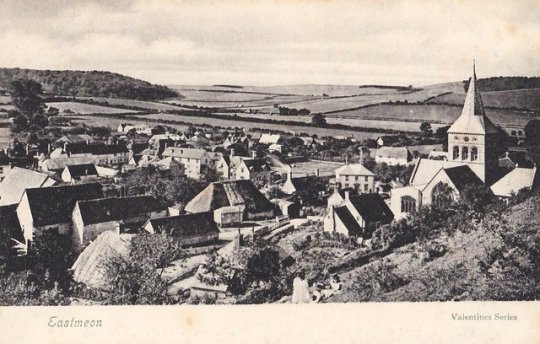
Postcard of East Meon (Hampshire, early 1900s), with a view from Vineyard Hole. At the bottom of the picture is a group of girls wearing smocks and boaters.
6 notes
·
View notes
Video
(via Riverside, East Meon | by clivea2z | Flickr)
38 notes
·
View notes
Text

“Ash (Fraxinus excelsior).
In the nineteenth century it was believed that if ash trees failed to produce fruit — keys — disaster was foretold.
In Yorkshire:
Some people every summer examined the ash tree . . . to see whether or not they had produced any seed; for the barrenness of the ash was said to be a sure sign of public calamity. It was a tradition among aged and thoughtful men, that the ash trees of England produced no seed during the year in which Charles the First was beheaded. [Jackson, 1873: 14]
In East Anglia:
The failure of the Crop of Ash-keys portends a death in the Royal Family . . . The failure in question is certainly, in some seasons, very remarkable; many an old woman believes that, if she were the fortunate finder of a bunch, and could get introduced to the king, he would give her a great deal of money for it. [Forby, 1830: 406]
ROWAN Or mountain ash, an unrelated tree which has leaves similar to those of ash, was widely considered to provide protection. Occasionally ash itself was also believed to be protective.
Rowan and ash sticks were used to drive cattle . . . believed to be 'kindly' and both trees were believed to be endowed with properties that ensured no interference from harmful influences. [Larne, Co. Antrim, October 1993]
In rural areas 'even' ash leaves-those leaves which lack a terminal leaflet and therefore have an even number of leaflets-were used in love DIVINATION. In Dorset:
The ash leaf is frequently invoked by young girls as a matrimonial oracle in the following way: The girl who wishes to divine who her future lover or husband is to be plucks an even ash leaf, and holding it in her hand, says:
“The even ash leaf in my hand, The first I meet shall be my man.’
Then putting it into her glove, adds:
‘The even ash leaf in my glove, The first I meet shall be my love.'
And lastly, into her bosom, saying:
‘The even ash leaf in my bosom, The first I meet shall be my husband.'
Soon after which the future lover or husband will be sure to make his appearance. [Udal, 1922: 254]
According to a 52-year-old woman who described how she used ash leaves for divination during her childhood:
Start at the bottom leaflet on the left-hand side and say:
“An even ash is in my hand
The first I meet will be my man.
If he don't speak and I don't speak,
This even ash I will not keep.”
As each word is said, count a leaflet around the leaf until the rhyme is completed (this probably entails going round the leaf several times). When the rhyme is finished, continue by reciting the alphabet until the bottom right-hand leaflet is reached. The letter given to this leaflet gives the initial of your boyfriend. Two or three leaves may be used so that you get a greater range of letters. [Thorncombe, Dorset, June 1976]
In many parts of northern Britain ash was known as esh. In north Lincolnshire:
There is a widespread opinion that if a man takes a newly-cut 'esh-plant' not thicker than his thumb, he may lawfully beat his wife with it. [Britten and Holland, 1886: 170]
Burning the ashen faggot — a faggot made from young ash saplings — was a widespread Christmastide custom in Devon and Somerset during the nineteenth and early twentieth centuries. According to a late nineteenth-century writer, it was:
an ancient ceremony transmitted to us from the Scandinavians who at their feast of Juul were accustomed to kindle huge bonfires in honour of Thor. The faggot is composed of ashen sticks, hooped round with bands of the same tree, nine in number. When placed on the fire, fun and jollity commence-master and servant are now all at equal footing. Sports begin-jumping in sacks, diving in the water for APPLES, and many other innocent games engage the attention of the rustics. Every time the bands crack by reason of the heat of the fire, all present are supposed to drink liberally of cider or egg-hot, a mixture of cider, eggs, etc. The reason why ash is selected in preference to any other timber is that tradition assigns it as the wood with which Our Lady kindled a fire in order to wash her new-born Son. [Poole, 1877: 6]
Ashen faggots are still burnt in a few West Country pubs, and miniature faggots are occasionally prepared for burning on domestic hearths.
On the evening of January sth ('old' Christmas Eve) at Curry Rivel, a Somerset village situated on the southern edge of Kings Sedgemoor, the wassailers go visiting' around the parish with their wassail song and the ashen faggot is ceremoniously burned at the King William IV public house. The faggot is made from young ash saplings and bound with bonds ('fonds,' 'fronds,' 'thongs,' or 'bonds') of withies (osiers); bramble has been used occasionally in the past. The number of bonds is variable but since the bursting of any one during the burning is a signal to ʻdrink up,' decency and country logic demands a 'reasonable few'. Either five or six are normally used. At the appropriate moment the faggot is placed on the fire, traditionally by the oldest customer-one villager can recall the fag- got being brought in a wheelbarrow as was 'right and proper'-and as each bond bursts there is much cheering and a general clamour for drink. The landlord, Mr John Cousins, prepares a bowl of hot punch for the occasion to augment the barrel of beer usually provided by the house Brewery. Until quite recently cider was consumed in large quantities; the 'brew' of cider and perry donated by the (Langs) Hambridge Brewery in 1957 is particularly remembered. [Willey, 1983: 40]
In the first half of the nineteenth century:
Some towns in Somerset held 'Ashen Faggot Balls'. The one in Taunton on January 2nd, 1826 was 'most respectably attended by the principal families of the town and neighbourhood'. It was still held twenty years later, but by then the event was losing its appeal. [Legg, 1986: 54]
In some parts of southern England ash twigs were carried by children on ASH WEDNESDAY.
In villages around Alton in Hampshire, and as far away as East Meon, near Petersfield, at Crowborough in Sussex, and doubtless in other places, children pick a black-budded twig of ash and put it in their pocket on this day. A child who does not remember to bring a piece of ash to school on Ash Wednesday can expect to have his feet trodden on by every child who possesses a twig, unless, that is, he or she is lucky enough to escape until midday. [Opie, 1959: 240]
I was born and lived as a child in Crowborough . . . On Ash Wednesday it was always the custom to take a piece of the [ash] tree around with you. The piece had to have a black bud, without it it was void. If you were unable to produce the piece when asked the rest of the children could stamp on your toes. I remember one day whan I was playing about with it in school and was told to take it to the front and leave it in the waste- paper basket-and all the way back to the seat had to dodge the stamps! Ever prudent I had another piece for play time! This all stopped at 12 mid-day. [Pershore, Worcester shire, October 1991]
[At Heston, Middlesex, in the 1930s] on Ash Wednesday we all took a twig of ash tree to school and produced it when challenged or risked a kick-and we had to get rid of it at 12 noon. We even risked the wrath of the teacher by rushing to an open window to throw out our twigs as soon as the mid-day dinner bell rang. [St Ervan, Cornwall, February 1992]
A widespread cure for HERNIA involved passing the patient through a split ash sapling, preferably one which had grown naturally from seed and had not previously been damaged by man. The tree was then tightly bound up and as it grew together so the patient would be healed. A full description provided in 1878 by the wife of a Sussex clergyman demonstrates how this cure, which required communal cooperation, was considered to be quite normal:
A child so afflicted must be passed nine times every morning on nine suc- cessive days at sunrise through a cleft in a sapling ash tree, which has been so far given up by the owner of it to the parents of the child as that there is an understanding that it shall not be cut down during the life of the infant that is passed through it. The sapling must be sound of heart, and the cleft must be made with an axe. The child, on being carried to the tree, must be attended by nine persons, each of whom must pass it through the cleft from west to east. On the ninth morning the solemn ceremony is concluded by binding the tree tightly with a cord, and it is supposed that as the cleft closes the health of the child will improve. In the neighbourhood of Petworth some cleft ashes may be seen, through which children have very recently been passed. I may add that only a few weeks since, a person who lately purchased an ash-tree standing in this parish, intended to cut it down, was told by the father of the child who had some time before passed through it, that the infirmity would be sure to return upon his son if it were felled. Whereupon the good man said, he knew such would be the case; and therefore he would not fell it for the world. [Latham, 1878: 40]
Similarly:
A remarkable instance of the extraordinary superstition which still prevails in the rural districts of Somerset has lately come to light at Athelney. It appears that a child was recently born in the neighbourhood with a physical ailment, and the neighbours persuaded the parents to resort to a very novel method of charming away the complaint. A sapling ash was split down the centre, and wedges were inserted so as to afford an opening sufficient for the child's body to pass through without touching either side of the tree. This having been done, the child was undressed, and, with its face held heavenward, it was drawn through the sapling in strict accord- ance with the superstition. Afterwards the child was dressed and simul- taneously the tree was bound up. The belief of those who took part in this strange ceremony is that if the tree grows the child will grow out of its bodily ills. The affair took place at the rising of the sun on a recent Sunday morning, in the presence of the child's parents, several of the neighbours, and the parish police-constable. [Bath and Wells Diocesan Magazine, 1886: 178]
An example ofan ash thus used can be seen in the Somerset Rural Life Museum at Glastonbury. A similar practice could be used to overcome IMPOTENCE.
In Wales the similar ritual was to split a young ash or HAZEL stem and hold it just fastened at the top. This made a symbolic vulva into which the impotent male introduced his recalcitrant organ. Binding up the tree again enabled it to heal, during which the impotence faded. [Richards, 1979: 13]
In Cheshire a cure for WARTS
was to steal a piece of bacon and push it under a piece of ash-bark. Excrescences would then appear on the tree; as they grew, the warts would van- ish. [Hole, 1937: 12]
In Wiltshire sufferers seeking a cure from NEURALGIA were advised:
Cut off a piece of each finger and toe nail and a piece off your hair. Get up on the next Sunday morning before sunrise and with a gimlet bore a hole in the first maiden ash you come across and put the nails and hair in; then plug the hole up. [Whitlock, 1976: 167]
In many areas 'shrew-ashes' were used to cure lameness in cattle and other illnesses. In a letter dated 8 January 1776, Gilbert White of Selborne, Hampshire, wrote:
A shrew-ash is an ash whose twigs or branches, when gently applied to the limbs of cattle, will immediately relieve the pains which a beast suffers from the running of a shrew-mouse over the part affected . . . Against this accident, to which they were continually liable, our provident fore- fathers always kept a shrew-ash at hand, which, once medicated, would maintain its virtue for ever. A shew-ash was made thus:- Into the body of the tree a deep hole was bored with an auger, and a poor devoted shrew- mouse was thrust in alive, and plugged in, no doubt, with several quaint incantations long since forgotten. [White, 1822, I: 344]
In the nineteenth century a particularly well-known shrew-ash in Richmond Park, Surrey. According to the park-keepers' tradition ʻgood Queen Bess had lurked under its shade to shoot deer as they were driven past’ [Ffennell, 1898: 333]. This tree was closely observed by Sir Richard Owen (1804-92), first director of the Natural History Museum in London, who lived near the tree, at Sheen Lodge, from grew 1852.
Either the year he came to live in the park or the year after . . . he first encountered a young mother with a sick child accompanied by 'an old dame', 'a shrew-mother', or, as he generally called her a 'witch-mother'. They were going straight for the tree; but when they saw him, they turned off in quite another direction till they supposed he was out of sight. He, however, struck by their sudden avoidance of him, watched them from a distance, saw them return to the tree, where they remained some little time, as if busily engaged with it; then they went away. He was too far off to hear anything said, but heard the sounds of voices in unison on other occasions. He heard afterwards from the keeper of Sheen Gate... that mothers with 'bewitched' infants, or with young children afficted with WHOOPING COUGH, decline, and other ailments, often came, some- times from long distances, to this tree. It was necessary that they should arrive before sunrise . . . Many children were said to be cured at the tree. The greatest secrecy was always observed when visiting. This was re- spected by Sir Richard Owen, who, whenever he saw a group advanc- ing towards it, moved away, and was always anxious that they should not be disturbed. He could not tell me in what year he last saw a group approach the tree to seek its aid. He could only say he had seen them often, and thought they continued to come for many years. [Ffennell, 1898: 334]
During a recent survey [of Richmond Park] the site of the old shrew ash was identified. This proved to be . . . the spot where an ancient ash still stood in 1987. A sucker from its roots was still alive, although the tree itself was passé. The storm of autumn brought the trunk down. A railing has now been erected around the remains, which are to be left in the ground, and a young ash is to be planted alongside the stump. Presumably it will eventually replace the old tree, but it means that the site at least will remain identifiable. [Kew, Surrey, February 1994]
There uses included curing EARACHE, RINGWORM, and SNAKE BITES.
The sap of a young ash sapling was used to cure earache. A sapling was cut and put into a fire so that when the stick started to burn the sap came out the end and was caught on a spoon. This could be put on cotton wool and put into the ear. [Daingean, Co. Offaly, January 1985]
Ringworm was more common in my childhood . . . a remedy resorted to was to burn ash twigs in a tin box or similar container and allow the smoke from the smouldering twigs to envelop the affected part—usually arms, neck or face. [Larne, Co. Antrim, October 1993]
Ash leaves are used to combat viper bites. When an animal has been bitten farmers boil ash leaves and give the animal the resulting liquid and place the boiled leaves as a poultice on the bite. Works on people too! [Dorchester, Dorset, February 1992]
Ash sticks were used as weapons.
The Joyces are tinkers . . . they are wary and row among themselves. They do have some fierce fights in which the women join in. When they have each others heads well cut with ash plants they settle down and are as friendly as ever. [IFCSS MSS 750: 242, Co. Longford]
Stories relating to Ireland's past tell of fair-day brawls where ash plants were used and blood flowed freely. [Ballymote, Co. Sligo, May 1994]”
—
The Oxford Dictionary of Plant-Lore
by Roy Vickery
39 notes
·
View notes
Text

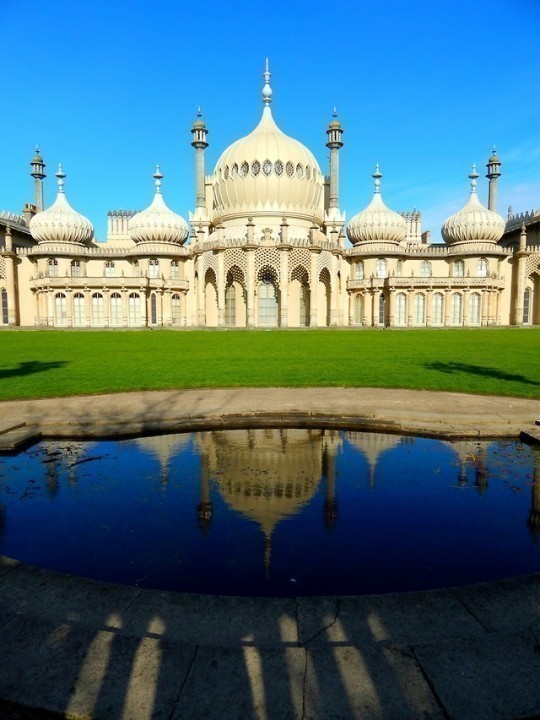
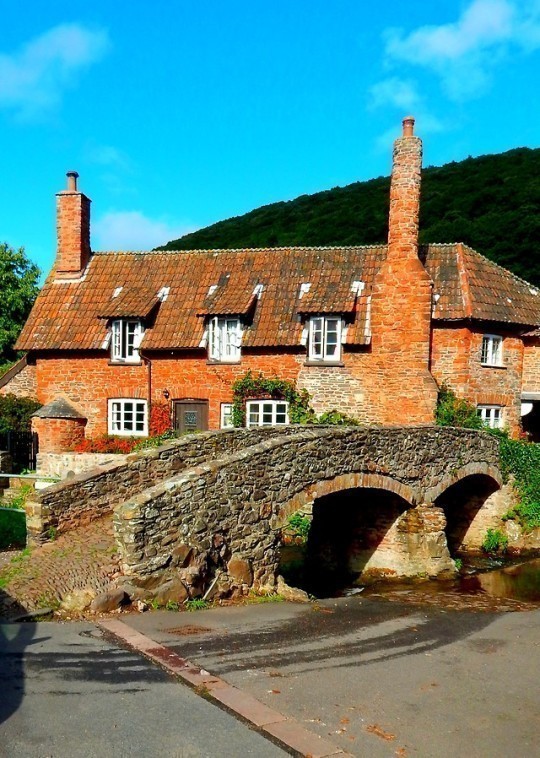





Great Britain: Winchester, Brighton, Allerford, Loch Torridon, Bath, Wells, Orford, East Meon,
#england#scotland#architecture#landscapes#winchester#brighton#allerford#loch torridon#bath#orford#wells#east meon#uk travel#travel#travel photography#europe#great britain#united kingdom#gb#uk#uk villages#uk towns#uk cities#uk places#cities#street#street photography#road#rural#rural livin
85 notes
·
View notes
Text
Topographical Survey Weston Colley: What it is and Why it's Important
youtube
A topographical survey, also known as a land survey, is a crucial process that provides a detailed map of a particular area's physical features. It typically includes information about the shape and contour of the land, the location of trees, man-made structures, and other features, including underground utilities, which can impact a construction project.
If you're planning on building on a piece of land in Weston Colley, a topographical survey is essential. It provides you with accurate data that you can use to create a site plan and determine the feasibility of the project. In this article, we'll explore what a topographical survey entails and why it's essential for any construction project.
What Does a Topographical Survey Involve?
A topographical survey requires specialized equipment and expertise to accurately measure and record land data. It involves the use of a range of surveying instruments, including electronic distance measurement equipment, total stations, and GPS receivers, to gather accurate data about the area under consideration.
During a topographical survey, a surveyor will typically take a series of measurements at regular intervals across the site. These measurements are then used to create a detailed map of the area, which shows the shape and contour of the land. The surveyor will also record the location of any existing structures or other features that might affect the construction process, such as trees, waterways, or underground utilities.
Why is a Topographical Survey Important?
A topographical survey is an essential step in the planning process for any construction project. It provides you with accurate data about the area you plan to build on, which can help you to make informed decisions about the feasibility of the project. Here are some of the reasons why a topographical survey is so important:
Accurate Data: A topographical survey provides you with highly accurate data about the land you plan to build on. This data can help you to determine the feasibility of the project and identify any potential issues that could impact the construction process.
Site Planning: A topographical survey provides you with detailed information about the area's topography, which can be used to create a site plan. This plan shows the layout of the land, including any existing structures or other features that need to be taken into account during the construction process.
Cost Estimation: A topographical survey can also help you to estimate the cost of the project accurately. By providing you with accurate data about the land, you can better understand the scope of the project and the resources needed to complete it.
Legal Requirements: In many cases, a topographical survey is required by local authorities or government agencies before any construction work can begin. Failure to obtain a survey can result in legal issues and delays in the construction process.
Conclusion
In conclusion, a topographical survey is an essential step in any construction project. It provides you with accurate data about the land, which can be used to create a site plan, estimate costs, and determine the feasibility of the project. If you're planning on building on a piece of land in Weston Colley, it's important to obtain a topographical survey before beginning any construction work. At Twenty20 Surveys Ltd, we offer a range of surveying services, including topographical surveys, to help you make informed decisions about your construction project. Contact us today to learn more about our services and how we can help you.
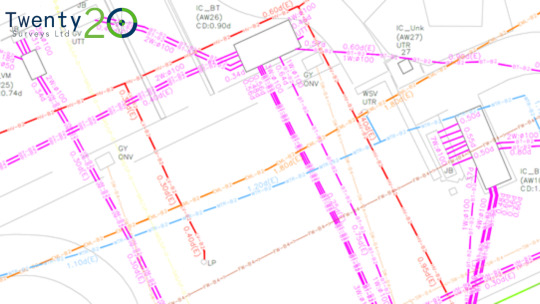
#Topographical Survey Weston Colley#Topographical Survey Upper Clatford#Topographical Survey Stuckton#Topographical Survey Somerstown#Topographical Survey Old Alresford#Topographical Survey Froxfield#Topographical Survey Colden Common#Topographical Survey Swanmore#Topographical Survey South Warnborough#Topographical Survey East Meon#Youtube
1 note
·
View note
Text
Reuben’s Children

1 Reuben was Israel’s first son. Reuben should have received the special privileges of the oldest son. But he had physical relations with his father’s slave woman. So those special privileges were given to Joseph’s sons. (Joseph was a son of Israel.) In the family history Reuben’s name is not listed as the first son. 2 Judah became stronger than his brothers. And a leader came from his family. But Joseph’s family received the privileges that belonged to the oldest son. 3 Reuben was the first son born to Israel. Reuben’s sons were Hanoch, Pallu, Hezron and Carmi.
4 These were the children of Joel: Shemaiah was Joel’s son. Gog was Shemaiah’s son. Shimei was Gog’s son. 5 Micah was Shimei’s son. Reaiah was Micah’s son. Baal was Reaiah’s son. 6 Beerah was Baal’s son. Beerah was a leader of the tribe of Reuben. Tiglath-Pileser king of Assyria captured Beerah and took him away.
7 Joel’s brothers and all his family groups are listed just as they are written in their family histories: Jeiel was the first, then Zechariah 8 and Bela. (Bela was the son of Azaz. Azaz was Shema’s son. Shema was Joel’s son.) They lived in the area of Aroer all the way to Nebo and Baal Meon. 9 Bela’s people lived to the east. Their land went as far as the edge of the desert, which is beside the Euphrates River. They lived there because they had too many cattle for the land of Gilead.
10 When Saul was king, Bela’s people fought a war against the Hagrite people. And they defeated the Hagrites. Then Bela’s people lived in the tents that had belonged to the Hagrites. They lived in all the area east of Gilead.
Gad’s Children
11 The people from the tribe of Gad lived near the Reubenite people. The Gadites lived in the area of Bashan all the way to Salecah. 12 Joel was the main leader in Bashan. Shapham was the second leader. Then Janai and Shaphat were leaders.
13 The seven relatives in their families were Michael, Meshullam, Sheba, Jorai, Jacan, Zia and Eber. 14 They were the descendants of Abihail. Abihail was Huri’s son. Huri was Jaroah’s son. Jaroah was Gilead’s son. Gilead was Michael’s son. Michael was Jeshishai’s son. Jeshishai was Jahdo’s son. Jahdo was the son of Buz. 15 Ahi was Abdiel’s son. Abdiel was Guni’s son. Ahi was the leader of their family.
16 The Gadite people lived in Gilead, Bashan and in the small towns around Bashan. They also lived on all the pasturelands in the Plain of Sharon all the way to the borders.
17 All these people’s names were written in the family history of Gad. This was done during the time Jotham was king of Judah and Jeroboam was king of Israel.
Soldiers Skilled in War
18 There were 44,760 fighters from the tribes of Reuben and Gad and the eastern half-tribe of Manasseh. They were brave men who could use shields and swords. They could use their bows well. They were skilled in war. 19 They started a war against the Hagrites and the people of Jetur, Naphish and Nodab. 20 The men from the tribes of Manasseh, Reuben and Gad prayed to God in the war. They asked God to help them. So he helped them because they trusted him. He allowed them to defeat the Hagrites. And they also defeated all those who were with the Hagrites. 21 They took the animals that belonged to the Hagrites. They took 50,000 camels, 250,000 sheep and 2,000 donkeys. They also captured 100,000 people. 22 Many Hagrites were killed. This is because God helped the people of Reuben, Gad and Manasseh. Then they lived there until Babylon captured them and took them away.
The Eastern Half-Tribe of Manasseh
23 There were many people in the eastern half-tribe of Manasseh. They lived in the area of Bashan all the way to Baal Hermon, Senir and Mount Hermon.
24 These were the family leaders: Epher, Ishi, Eliel, Azriel, Jeremiah, Hodaviah and Jahdiel. They were all strong, brave and famous men. And they were leaders in their families. 25 But they sinned against the God that their ancestors had worshiped. They began worshiping the gods of the people in that land. And those were the people God was destroying. 26 So the God of Israel made Pul king of Assyria want to go to war. Pul was also called Tiglath-Pileser. He captured the people of Reuben, Gad and the eastern half-tribe of Manasseh. And he took them away to Halah, Habor, Hara and near the Gozan River. And they have lived there from that time until this day.
— 1 Chronicles 5 | International Children’s Bible (ICB)
The Holy Bible, International Children’s Bible® Copyright© 1986, 1988, 1999, 2015 by Thomas Nelson.
Cross References: Genesis 25:15; Genesis 25:21; Genesis 25:31; Genesis 46:9; Exodus 34:15; Numbers 1:3; Numbers 32:34; Numbers 32:38; Deuteronomy 3:9-10; Joshua 22:8-9; 2 Kings 14:16; 2 Kings 14:28; 2 Kings 15:19; 1 Chronicles 2:31; 1 Chronicles 27:31; 2 Chronicles 28:20; Song of Solomon 2:1; Song of Solomon 5:24; Matthew 2:6; Acts 9:35; Romans 8:31; Revelation 18:13
#the descendants of Reuben#the descendants of Gad#soldiers skilled in war#the Half-tribe of Manasseh#1 Chronicles 5#Book of First Chronicles#ICB#International Children’s Bible#Thomas Nelson
7 notes
·
View notes
Text
MP's who voted against free school meals: Part 1
Nigel Adams (Selby and Ainsty),
Bim Afolami (Hitchin and Harpenden),
Adam Afriyie (Windsor),
Imran Ahmad Khan (Wakefield),
Nickie Aiken (Cities of London and Westminster),
Peter Aldous (Waveney), Lucy Allan (Telford),
David Amess (Southend West), Lee Anderson (Ashfield),
Stuart Anderson (Wolverhampton South West),
Stuart Andrew (Pudsey),
Edward Argar (Charnwood),
Sarah Atherton (Wrexham),
Victoria Atkins (Louth and Horncastle),
Gareth Bacon (Orpington),
Richard Bacon (South Norfolk),
Kemi Badenoch (Saffron Walden),
Shaun Bailey (West Bromwich West),
Duncan Baker (North Norfolk),
Steve Baker (Wycombe),
Harriett Baldwin (West Worcestershire),
Steve Barclay (North East Cambridgeshire),
Simon Baynes (Clwyd South),
Aaron Bell (Newcastle-under-Lyme),
Scott Benton (Blackpool South),
Paul Beresford (Mole Valley),
Jake Berry (Rossendale and Darwen),
Saqib Bhatti (Meriden),
Bob Blackman (Harrow East),
Crispin Blunt (Reigate),
Peter Bone (Wellingborough),
Peter Bottomley (Worthing West),
Andrew Bowie (West Aberdeenshire and Kincardine),
Ben Bradley (Mansfield),
Karen Bradley (Staffordshire Moorlands),
Graham Brady (Altrincham and Sale West),
Suella Braverman (Fareham),
Jack Brereton (Stoke-on-Trent South),
Andrew Bridgen (North West Leicestershire),
Steve Brine (Winchester),
Paul Bristow (Peterborough),
Sara Britcliffe (Hyndburn),
James Brokenshire (Old Bexley and Sidcup),
Anthony Browne (South Cambridgeshire),
Fiona Bruce (Congleton),
Felicity Buchan (Kensington),
Robert Buckland (South Swindon),
Alex Burghart (Brentwood and Ongar),
Conor Burns (Bournemouth West),
Rob Butler (Aylesbury),
Alun Cairns (Vale of Glamorgan),
Andy Carter (Warrington South),
James Cartlidge (South Suffolk),
William Cash (Stone),
Miriam Cates (Penistone and Stocksbridge),
Maria Caulfield (Lewes), Alex Chalk (Cheltenham),
Rehman Chishti (Gillingham and Rainham),
Jo Churchill (Bury St Edmunds),
Greg Clark (Tunbridge Wells),
Simon Clarke (Middlesbrough South and East Cleveland),
Theo Clarke (Stafford),
Brendan Clarke-Smith (Bassetlaw),
Chris Clarkson (Heywood and Middleton),
James Cleverly (Braintree),
Therese Coffey (Suffolk Coastal),
Damian Collins (Folkestone and Hythe),
Alberto Costa (South Leicestershire),
Robert Courts (Witney),
Claire Coutinho (East Surrey),
Geoffrey Cox (Torridge and West Devon),
Virginia Crosbie (Ynys Mon),
James Daly (Bury North),
David T C Davies (Monmouth),
James Davies (Vale of Clwyd),
Gareth Davies (Grantham and Stamford),
Mims Davies (Mid Sussex),
Philip Davies (Shipley),
David Davis (Haltemprice and Howden),
Dehenna Davison (Bishop Auckland),
Caroline Dinenage (Gosport),
Sarah Dines (Derbyshire Dales),
Jonathan Djanogly (Huntingdon),
Michelle Donelan (Chippenham),
Nadine Dorries (Mid Bedfordshire),
Steve Double (St Austell and Newquay),
Oliver Dowden (Hertsmere),
Jackie Doyle-Price (Thurrock),
Richard Drax (South Dorset),
Flick Drummond (Meon Valley),
David Duguid (Banff and Buchan),
Iain Duncan Smith (Chingford and Woodford Green),
Philip Dunne (Ludlow),
Mark Eastwood (Dewsbury),
Ruth Edwards (Rushcliffe),
Michael Ellis (Northampton North),
Tobias Ellwood (Bournemouth East),
Natalie Elphicke (Dover),
George Eustice (Camborne and Redruth),
Luke Evans (Bosworth),
David Evennett (Bexleyheath and Crayford),
Ben Everitt (Milton Keynes North),
Michael Fabricant (Lichfield),
Laura Farris (Newbury),
Simon Fell (Barrow and Furness), Katherine Fletcher (South Ribble), Mark Fletcher (Bolsover), Nick Fletcher (Don Valley), Vicky Ford (Chelmsford), Kevin Foster (Torbay),
Mark Francois (Rayleigh and Wickford),
Lucy Frazer (South East Cambridgeshire),
George Freeman (Mid Norfolk),
Mike Freer (Finchley and Golders Green),
Richard Fuller (North East Bedfordshire),
Marcus Fysh (Yeovil),
Mark Garnier (Wyre Forest),
Nusrat Ghani (Wealden),
Nick Gibb (Bognor Regis and Littlehampton),
Peter Gibson (Darlington),
Jo Gideon (Stoke-on-Trent Central),
Cheryl Gillan (Chesham and Amersham),
John Glen (Salisbury),
Robert Goodwill (Scarborough and Whitby),
Michael Gove (Surrey Heath),
Richard Graham (Gloucester),
Helen Grant (Maidstone and The Weald),
James Gray (North Wiltshire),
Chris Grayling (Epsom and Ewell),
Chris Green (Bolton West),
Damian Green (Ashford),
Andrew Griffith (Arundel and South Downs),
Kate Griffiths (Burton),
James Grundy (Leigh),
Jonathan Gullis (Stoke-on-Trent North),
Luke Hall (Thornbury and Yate),
Stephen Hammond (Wimbledon),
Matt Hancock (West Suffolk),
Greg Hands (Chelsea and Fulham),
Mark Harper (Forest of Dean),
Rebecca Harris (Castle Point),
Trudy Harrison (Copeland),
Sally-Ann Hart (Hastings and Rye),
Simon Hart (Carmarthen West and South Pembrokeshire),
John Hayes (South Holland and The Deepings),
Oliver Heald (North East Hertfordshire),
Chris Heaton-Harris (Daventry),
Gordon Henderson (Sittingbourne and Sheppey),
Darren Henry (Broxtowe),
Antony Higginbotham (Burnley),
Damian Hinds (East Hampshire),
Kevin Hollinrake (Thirsk and Malton),
Philip Hollobone (Kettering),
Adam Holloway (Gravesham),
Paul Holmes (Eastleigh),
John Howell (Henley),
Paul Howell (Sedgefield),
Nigel Huddleston (Mid Worcestershire),
Eddie Hughes (Walsall North),
Jane Hunt (Loughborough),
Jeremy Hunt (South West Surrey),
Tom Hunt (Ipswich),
Alister Jack (Dumfries and Galloway),
Sajid Javid (Bromsgrove),
Ranil Jayawardena (North East Hampshire),
Mark Jenkinson (Workington),
Andrea Jenkyns (Morley and Outwood),
Robert Jenrick (Newark),
Boris Johnson (Uxbridge and South Ruislip),
Caroline Johnson (Sleaford and North Hykeham),
Gareth Johnson (Dartford), David Johnston (Wantage),
Andrew Jones (Harrogate and Knaresborough),
Fay Jones (Brecon and Radnorshire),
David Jones (Clwyd West),
Marcus Jones (Nuneaton),
Simon Jupp (East Devon),
Daniel Kawczynski (Shrewsbury and Atcham),
Alicia Kearns (Rutland and Melton),
Gillian Keegan (Chichester),
Julian Knight (Solihull),
Greg Knight (East Yorkshire),
Danny Kruger (Devizes),
Kwasi Kwarteng (Spelthorne),
John Lamont (Berwickshire, Roxburgh and Selkirk),
Robert Largan (High Peak),
Andrea Leadsom (South Northamptonshire),
Edward Leigh (Gainsborough),
Ian Levy (Blyth Valley),
Andrew Lewer (Northampton South),
Brandon Lewis (Great Yarmouth),
Ian Liddell-Grainger (Bridgwater and West Somerset),
Chris Loder (West Dorset),
Mark Logan (Bolton North East),
Marco Longhi (Dudley North),
Julia Lopez (Hornchurch and Upminster),
Jack Lopresti (Filton and Bradley Stoke),
Jonathan Lord (Woking),
Craig Mackinlay (South Thanet),
Cherilyn Mackrory (Truro and Falmouth),
Rachel Maclean (Redditch),
Alan Mak (Havant),
Kit Malthouse (North West Hampshire),
Anthony Mangnall (Totnes),
Scott Mann (North Cornwall),
Julie Marson (Hertford and Stortford),
Theresa May (Maidenhead),
Jerome Mayhew (Broadland),
Karl McCartney (Lincoln),
Mark Menzies (Fylde),
Johnny Mercer (Plymouth, Moor View),
Huw Merriman (Bexhill and Battle),
Stephen Metcalfe (South Basildon and East Thurrock),
Robin Millar (Aberconwy), Maria Miller (Basingstoke),
Amanda Milling (Cannock Chase),
Nigel Mills (Amber Valley),
Andrew Mitchell (Sutton Coldfield),
Gagan Mohindra (South West Hertfordshire),
Robbie Moore (Keighley),
Penny Mordaunt (Portsmouth North),
David Morris (Morecambe and Lunesdale),
James Morris (Halesowen and Rowley Regis),
Wendy Morton (Aldridge-Brownhills),
Kieran Mullan (Crewe and Nantwich),
David Mundell (Dumfriesshire, Clydesdale and Tweeddale),
Sheryll Murray (South East Cornwall),
Andrew Murrison (South West Wiltshire),
Robert Neill (Bromley and Chislehurst),
Caroline Nokes (Romsey and Southampton North),
Jesse Norman (Hereford and South Herefordshire),
Neil O'Brien (Harborough),
Guy Opperman (Hexham),
Owen Paterson (North Shropshire),
Mark Pawsey (Rugby),
Mike Penning (Hemel Hempstead),
John Penrose (Weston-super-Mare),
Chris Philp (Croydon South),
Christopher Pincher (Tamworth),
Rebecca Pow (Taunton Deane),
Victoria Prentis (Banbury),
Mark Pritchard (The Wrekin),
Jeremy Quin (Horsham),
Will Quince (Colchester),
Tom Randall (Gedling),
John Redwood (Wokingham),
Jacob Rees-Mogg (North East Somerset),
Nicola Richards (West Bromwich East),
Angela Richardson (Guildford),
Rob Roberts (Delyn),
Laurence Robertson (Tewkesbury),
Mary Robinson (Cheadle),
Andrew Rosindell (Romford),
Lee Rowley (North East Derbyshire),
Dean Russell (Watford),
David Rutley (Macclesfield),
Gary Sambrook (Birmingham, Northfield),
Selaine Saxby (North Devon), Paul Scully (Sutton and Cheam),
Bob Seely (Isle of Wight), Andrew Selous (South West Bedfordshire),
10 notes
·
View notes


